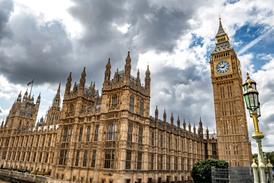David Quick looks at how brokers have had to adapt to the challenges of the buy-to-let phenomenon.
Buy-to-let property investment has been one of the UK's highest growth industries in recent years, bringing with it a host of spin-off benefits including soaring numbers of new landlords requiring specialist insurance.
Recent figures from the Association of Residential Lettings Agents (ARLA) suggest more than a million households live in buy-to-let properties worth a total of £120bn and contributing £30bn a year to the UK economy.
Even recent worries over a slowing property market have done little to dampen investor enthusiasm, with ARLA predicting the number of tenancies will continue increasing by 20,000-30,000 a year over the next decade.
Amateur night
The idea of landlords renting out homes is nothing new, but the buy-to-let phenomenon really kicked off 10 years ago following a relaxation of strict tenancy rules and a move by banks to allow private individuals to take out mortgages on investment properties.
Low interest rates, rapidly increasing property prices and poorly performing stock markets all helped lodge the idea of buy to let as a money making proposition firmly in the public consciousness.
One of the effects of this boom is that two-thirds of private rented property is now owned by individuals, compared to less than half in the mid-1990s. The market has become dominated by the amateur landlord, likely to have only one or perhaps two properties which are not the main source of their income but a long-term investment.
This switch has important implications for the insurance industry. Professional landlords and organisations, and companies that let properties are usually very aware of their insurance needs, in terms of their legal obligations to tenants and the need to protect their business from risks.
Risking everything
Most small investors also take their insurance needs seriously; many are homeowners well aware of the need to protect their prime asset. But it is also true to say that there is not the same level of knowledge among amateurs as to how best to use insurance products and services to protect their risks and also resources for buying insurance are likely to be tighter.
Most landlord property insurance is a professional let - an assured tenancy of at least six months on the basis the home is let to an individual or family with a rental agreement directly between landlord and tenant and with rent paid to the landlord.
Most landlords understand the need for buildings insurance and, if the property is furnished, cover for contents. The key point is that landlords must make sure their insurance companies know exactly what category of tenant they have because this will affect their premiums and the conditions of cover.
Some policies are flexible and allow this to happen mid-term, provided the landlord contacts the broker or insurer.
The responsibility of insurers or brokers includes warning the landlord at point of sale of the need to notify any change in the type of tenant, or they could be held responsible for the payment of a claim. But once this warning is given, it becomes the landlord's responsibility and failure to do so could invalidate the policy.
Another key insurance for landlords is loss of rent which covers the income lost if the property becomes uninhabitable.
Other insurances it may be worth taking out include legal protection cover to guard against the costs of contractual disputes or bad debt recovery. It is also possible to cover against the need to repossess the property, perhaps from squatters or tenant default. Landlords also often consider extra options for items such as carpets in communal areas of buildings and related equipment such as lifts.
Vacancies
The chances are that most landlords will suffer voids which are unlikely to affect their insurance provided the periods the house is left unoccupied are not too long. Those who know holiday lets will be empty for long periods out of season should certainly make their insurers aware.
Insurers view unoccupied property as a much higher risk than occupied. Many insist on special terms which may include withdrawing cover for theft, escape of water and accidental damage to glass and sanitary ware.
Customers having work done on their property such as conversions, extensions, refurbishment or modernisation should also double-check with their insurers as there may be additional terms added to the policy due to the higher risk of claims from damage and unauthorised access.
Ultimately landlords are in business to make money and buying insurance is an extra cost. But bearing in mind the size of the assets involved and the difficulty of diversifying risk across a portfolio of property that may be as small as a single flat, the alternative to adequate insurance may be catastrophe.
- David Quick is managing director of CETA.




































